Diseases and pests of strawberries

Growing garden strawberries at home requires some effort. To please yourself and your loved ones with delicious berries, you need to learn as much as possible about this culture. Particular attention should be paid to combating diseases and pests, which often destroy both young bushes and adult plants.
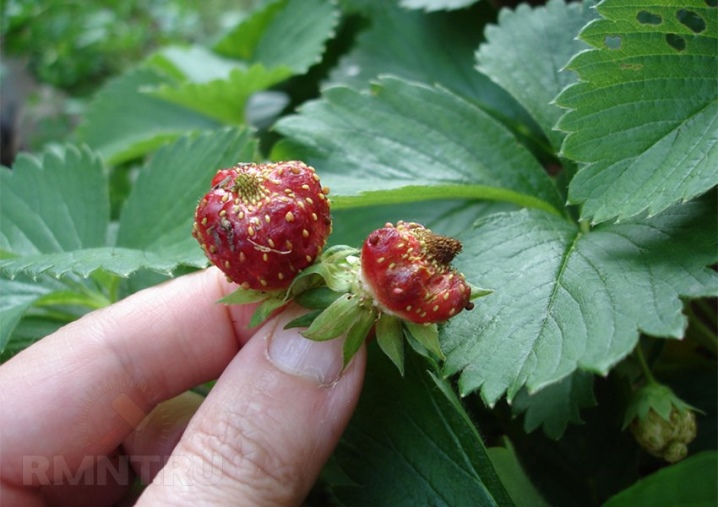
Diseases and their treatment
Very often, strawberry bushes are affected by various diseases. If you notice signs of the disease in time, the plant can be saved.
Fusarium and late blight wilting
Late blight is a fairly common disease that often affects strawberries after a period of heavy rainfall. You can immediately notice the signs of the disease: the foliage begins to fade. Over time, it dies off along with the roots, the fruiting of the infected bush stops. After a month and a half, the plant dies.
In order to protect strawberries from this disease, the roots of plants must be disinfected before planting. It's also important not to water them too much.
Mature bushes should be inspected regularly. If you notice damaged parts of the plant, they must be removed and destroyed immediately.
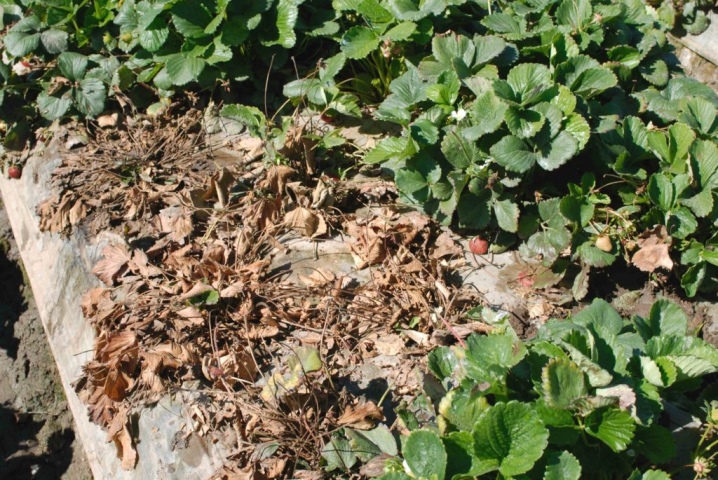
Gray rot
This disease spreads well in cloudy and rainy weather. The infection of the plant is evidenced by the appearance on the leaves of rapidly growing spots of a grayish-brown color. Over time, the disease begins to affect leaf stems, buds and fruits. Weakened bushes that do not receive proper care or grow in an area inhabited by pests suffer most from this disease.
To prevent the appearance of gray rot, it is worth choosing varieties that are resistant to fungal diseases. It is recommended to disinfect the roots of plants before planting. It is also important to observe the crop rotation. Strawberries need to be transplanted to a new site every 2-3 years. It is also recommended to disinfect the ground before planting.
Mature plants should be inspected regularly. If gray-brown spots are found on foliage or stems, they must be removed and destroyed immediately. To combat this fungal disease, it is worth using proven fungicides.

Powdery mildew
It is very easy to notice the appearance of this disease on the bushes. The leaves of the affected plants are covered with a dense whitish coating. Over time, it spreads to stems and fruits. With a strong infection, the leaves of the strawberry curl upward and dry out in a short time.
You can reduce your risk of contracting this disease by following simple guidelines. For planting, you need to choose only healthy seedlings. In the fall, all dry and affected foliage must be removed from the site. It cannot be used for compost. The best solution is to burn the affected leaves. In row spacings, green manure can be planted: dill, peas, rapeseed, radish.
There are several time-tested remedies that can be used to combat powdery mildew.
- Ash infusion. For its preparation, a glass of sifted wood ash is diluted in a bucket of water. The solution is used for watering strawberries at the root. It not only protects the plant from fungal disease, but also feeds it.
- Infusion of mullein. A liter of fresh product is diluted in 10 liters of water. The mixture is infused throughout the day and is used to water diseased strawberries before and after flowering.
- Milk solution. It is prepared from 1 liter of kefir and 10 liters of water. The products are mixed in a large container, the mixture is used for spraying bushes.Instead of kefir, you can use whey or slightly sour milk.
Also, for the processing of plants, such agents as "Fitosporin" and "Topaz" are used.
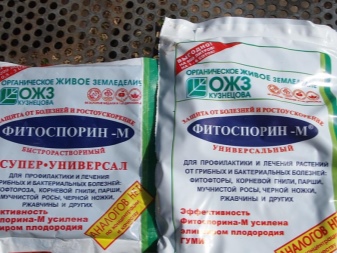

Brown leaf spot
Signs of this disease can be seen in the middle of summer, by finding dark spots on the leaves of strawberries. This disease appears if:
- strawberry bushes are planted too densely;
- there are a lot of weeds on the site;
- bushes are affected by pests that can carry fungal spores;
- strawberries are watered too often or cold water is used for this.
To combat brown spot in spring, strawberries should be sprayed with preparations such as Horus, Falcon or Skor. You can also use folk remedies.
- Potassium permanganate. To prepare a solution, 5 grams of potassium permanganate is diluted in 10 liters of water. The product is immediately used for spraying bushes.
- Iodine. In a bucket of water, you need to dilute 2 tablespoons of soda and a bottle of iodine. There you need to add 20 grams of soap shavings.
- Copper oxychloride... It is necessary to process plants with a solution 2-3 times per season. It is necessary to spray not only the upper part of the sheet, but also the lower one.
It is also recommended to manually remove all brown leaves after harvest.
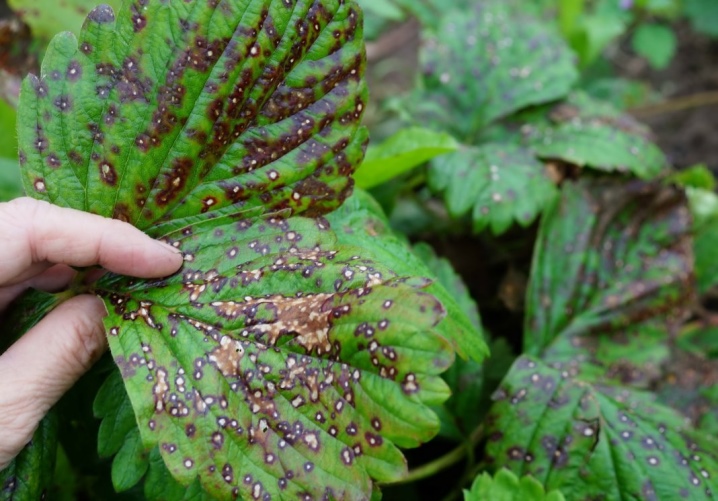
White leaf spot
After a strawberry disease, dotted spots appear on the leaves, which eventually begin to turn white. With severe damage, the peduncles dry. Typically, white spot affects bushes in July.
The timely destruction of all leaves and branches at the stake helps to cope with this disease. Chemicals containing copper can also be used to combat.
It is necessary to spray with the prepared solution both the outer and inner parts of the bush.
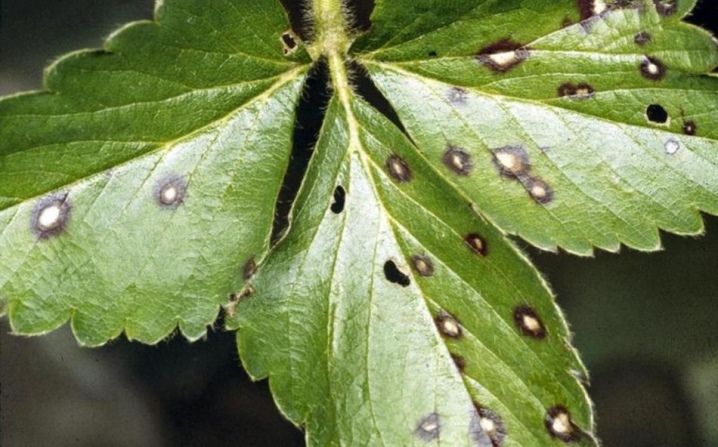
Pest Review and Control
Insects that settle on bushes can also harm plants.
Nematode
The description of the nematode looks very simple - these are small light worms up to 1 mm in size. You can notice their appearance by the following signs:
- leaves curl and deform;
- the plant becomes smaller, develops slowly;
- cuttings are shortened and dry up.
It is quite difficult to deal with the strawberry nematode, it is easier to prevent its appearance. For planting, you should always choose only healthy seedlings. Its roots must be disinfected before planting. It is also important to monitor the quality of the soil in which the plants are planted. If signs of damage are seen on adult bushes, they must be immediately dug up and burned.
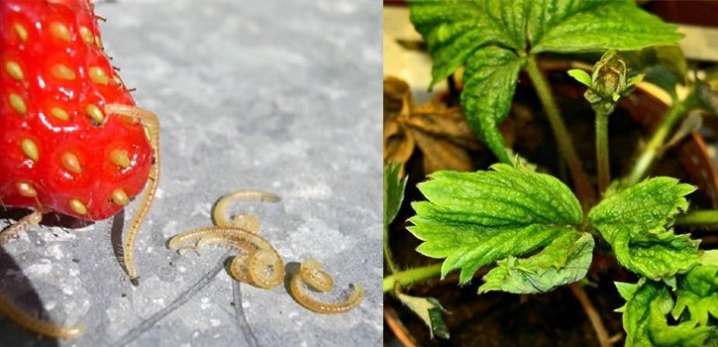
Mite
This insect is one of the main pests of domestic strawberries. The mites damage the strawberry leaves, making them wrinkled and the berries small. If there are too many insects on the site, the plant may well die.
To protect strawberries from ticks, only healthy seedlings should be planted in the beds. Before flowering bushes, plants should be sprayed with onion peel infusion. Infected strawberries are treated with "Neoron".
If the lesion is too severe, the plants just need to be removed from the site.

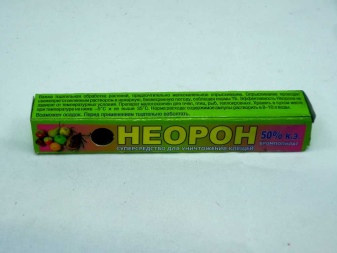
Aphid
Very often, aphids attack strawberries. You can notice its appearance, focusing on the following signs:
- plants become lethargic and lose their shape;
- after watering they do not recover;
- a large number of ants are found on the site;
- bushes grow slowly, and their tops are deformed;
- on the leaves and shoots there is a sticky and viscous liquid secreted by aphids.

You can fight it using both insecticides and folk remedies. As a rule, the bushes are treated with drugs such as Iskra, Fufanon or Fitoverm. Homemade infusions are also often used.
- Soap solution. It is prepared from 1 tablespoon of soap shavings. You can use laundry or tar soap. The product is diluted in a liter of water. After the mixture is warmed up, infused for the whole night, and then used for spraying.
- Herbal infusion. For processing large-fruited strawberries from aphids, you need to finely chop fresh foliage and dandelion roots. 400 grams of plants must be poured with 10 liters of water and infused for 4 hours.
- Onion broth. To prepare a decoction for processing bushes, you need to chop 2 onions along with the husk. After that, the product must be poured with a liter of warm water and left to infuse overnight. In the morning it can be used to spray plants. You can increase the effectiveness of this broth by adding a little soap shavings to it.
Strawberry bushes need to be processed several times until the aphids disappear completely. You can use infusions even during the flowering of plants. To prevent small insects from returning to the garden, it is also necessary to get rid of the ant colony.

Wasps
Very often strawberries in the garden are destroyed by wasps. If an insect eats berries, you need to get rid of it. The fight should be complex, otherwise the insects will return to the site and continue to destroy the fruits.
As a rule, gardeners use traps to get rid of wasps. The easiest option is a cut-throated plastic bottle, smeared with a sweet mixture and filled with liquid. This trap attracts wasps very well. Once in it, insects can no longer get out and die there.
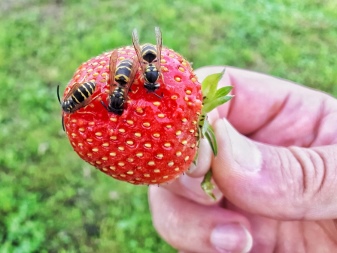

Other
Sometimes on the beds with strawberries appear and weevils... These are small insects that gnaw through holes in strawberry leaves. Weevil larvae are also dangerous to plants. They also actively destroy leaves and buds of plants.
In order to get rid of these pests, strawberries are treated with karbofos emulsion a few days before and after flowering. If a large number of these insects are found on the site, the bushes can be treated with preparations such as Fitoverm or Iskra Bio. They help protect plants from weevils, but they are absolutely safe for bees.
Strawberries can also be harmful slugs... They prefer to settle on plants with delicate and succulent leaves and damage them very quickly. Alternative methods or chemicals can be used to protect plants from slugs.
As a rule, gardeners use metaldehyde to combat them. This is the most effective way to kill pests.
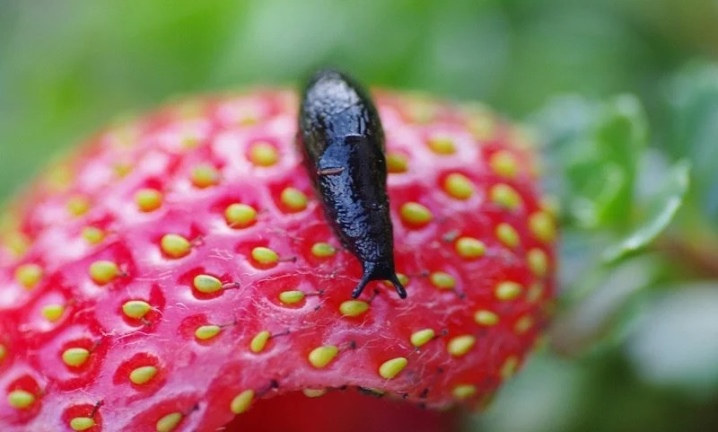
Prevention measures
In order to prevent the appearance of pests or infection of bushes on the site, certain preventive measures must be followed.
- It is best to buy seedlings in proven nurseries. In this case, you can be sure of the quality of the planting material.
- Water the beds in moderation. Use for this should be warm settled water. If the summer is rainy, it is worth refraining from watering altogether, otherwise the plants may be affected by fungal diseases.
- It is recommended to mulch the beds with strawberries. Needles, straw or sawdust can be used as mulch.
- It is worth planting green manure plants near the site. Lupine, rapeseed, mustard or radish are best suited for this purpose. They not only protect plants from pests, but also enrich the soil well.
- Once a season, strawberry beds need to be treated with colloidal sulfur. In this way, the bushes can be protected from many diseases.
- During flowering, plants are sprayed with boric acid. This makes them more resilient and speeds up the process of fruit development.
- After harvesting, the bushes must be inspected. All damaged or dry leaves and shoots must be destroyed. Helps protect bushes from diseases and pests and autumn digging of the site.
Good care of strawberry beds and their timely processing will protect the plants and grow a good harvest.
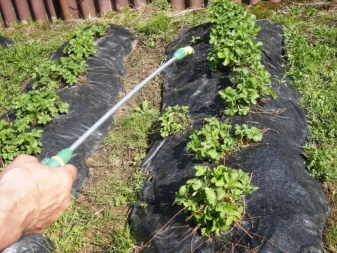
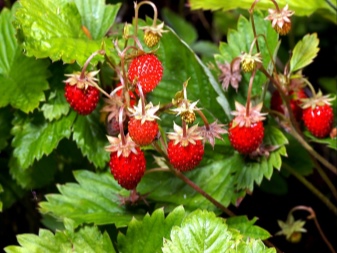













The comment was sent successfully.